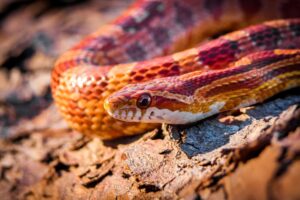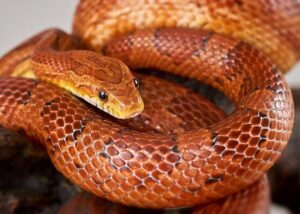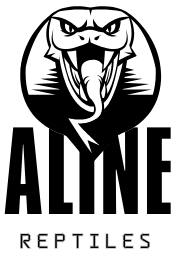Imagine waking up in the middle of the night to find your pet corn snake slithering gracefully through its tank, exploring every corner with keen curiosity. It’s a fascinating sight, but if you’re new to the world of reptiles, it may leave you wondering—why is your corn snake awake at this hour? Is this normal, or Are Corn Snakes Nocturnal?
For snake owners, understanding your pet’s natural behaviors is crucial for providing the best care. One of the most common questions new corn snake owners ask is whether corn snakes are nocturnal. Do these serpents prefer to be active at night? Or do they function during the day, like a more typical pet?
In this article, we’ll dive deep into the nocturnal nature of corn snakes, why they have evolved this way, and how you can tailor their care routine to ensure they’re happy and healthy. By the end, you’ll understand how to better interpret your corn snake’s behavior, feeding habits, and activity patterns—and how to provide the ideal environment for your nocturnal pet.
What Does Nocturnal Mean?

Before we dive into whether corn snakes are nocturnal, let’s first clarify what it means to be a nocturnal animal. In simple terms, a nocturnal animal is one that is primarily active during the night and rests during the day. Many creatures, including reptiles, have evolved to thrive in low-light conditions, hunting and exploring when it’s dark outside.
It’s important to note that not all nocturnal animals are the same. Some animals are strictly active at night, while others may be crepuscular, meaning they are most active at twilight—during dawn and dusk. Corn snakes, it turns out, fit into this category. They are not strictly nocturnal, but they do tend to be most active during the evening hours and early morning.
The ability to be active at night offers corn snakes several advantages in their natural habitats, which are typically dense forests, grasslands, and agricultural areas where they hunt for small rodents, birds, and amphibians. Now that we know what nocturnal means, let’s explore how this applies specifically to corn snakes.
Are Corn Snakes Naturally Nocturnal?
Yes, corn snakes are considered primarily nocturnal, although they can exhibit both nocturnal and crepuscular behaviors depending on their environment. These snakes are most active during the evening hours and into the night, which helps them avoid the extreme heat of the day.
In their native habitats of the southeastern United States, corn snakes have adapted to a more nocturnal lifestyle to hunt for food and navigate their surroundings under the cover of darkness.
Corn snakes, like many other reptile species, are ectothermic (cold-blooded). This means they rely on their external environment to regulate their body temperature. During the hottest parts of the day, temperatures can soar, making it difficult for corn snakes to stay active without becoming overheated. As a result, they become more active during the cooler, darker hours when it’s easier for them to maintain a stable body temperature.
Additionally, being nocturnal offers corn snakes a chance to hunt more effectively. Many of their prey, such as mice and rats, are more active during the night, so corn snakes take advantage of this feeding schedule. It also reduces the likelihood of encountering predators, making the night a safer time for these stealthy hunters to roam.
How Does the Nocturnal Behavior of Corn Snakes Affect Their Care?
Understanding that corn snakes are naturally nocturnal can significantly impact how you care for them. To ensure your pet’s well-being, it’s essential to adjust their environment and care routine to match their biological rhythms.
Feeding Times One of the first things you might notice as a corn snake owner is that your snake may not be interested in eating during the day. This is entirely normal! Corn snakes tend to prefer eating when it’s dark, so scheduling feeding times in the evening or at night is the best way to align with their natural hunting behavior. If you offer food during the day, your corn snake may ignore it until it’s nighttime.
Temperature and Humidity Corn snakes thrive in temperatures that are not too hot or cold. During the daytime, you can maintain a comfortable basking temperature (around 85–90°F or 29–32°C) for your snake.
However, at night, it’s important to allow the temperature in the tank to drop to a cooler range (around 70–75°F or 21–24°C) to mimic their natural environment. This cool-down period will help your snake feel more at home and encourage nocturnal activity.
Lighting and Environment Lighting plays a significant role in the sleep-wake cycle of corn snakes. Since they are nocturnal, bright, harsh lights can be stressful for them. Ideally, you should use dim lighting or night-specific lighting in the tank, such as a low-wattage red or blue bulb. These colors mimic natural moonlight and won’t disrupt their natural behavior.
Corn snakes also need plenty of hiding spots where they can retreat and rest during the day. Providing secure hideouts will help them feel safe and prevent them from feeling stressed by the light. Additionally, adding branches and rocks that they can climb on will allow them to feel more comfortable and mimic their natural habitat.
Signs Your Corn Snake is Active at Night:
When your corn snake becomes active at night, you’ll notice certain behaviors that show they’re ready to explore and hunt. Here are a few signs that your corn snake is in its nocturnal mode:
- Slithering and Exploration: One of the most noticeable signs of a nocturnal corn snake is when it begins exploring its tank. It will likely spend time climbing on branches, slithering through substrate, or exploring every corner of its habitat.
- Hunting Behavior: If your corn snake is in its nocturnal hunting phase, it might be seen flicking its tongue in the air, sensing the environment, and searching for prey. If you have live or frozen-thawed rodents in the tank, this behavior is more prominent.
- Basking Periods: Corn snakes, while mostly nocturnal, still need to bask in the warmth of their enclosure. However, these basking periods often happen during the early evening, just before the snake becomes fully active. This is when they’ll soak in the heat from a basking lamp to prepare for nighttime activity.
- Social Behavior (if applicable): Some corn snakes can be more interactive at night, especially if they’re accustomed to handling. They may be more willing to interact when it’s dark, though it’s important to remember that all snakes are unique in their behavior.
Can You Keep Corn Snakes Active During the Day?
While it’s possible to try and adjust your corn snake’s schedule, it’s generally not recommended to force them into a diurnal routine (active during the day). Doing so may cause unnecessary stress and disrupt their natural rhythms. Corn snakes have evolved over time to be nocturnal and changing this behavior could negatively impact their overall well-being.
If you’re looking to handle your corn snake during the day, it’s best to wait for periods when they are resting or winding down, typically after their evening active phase. Be patient and allow them to adjust to your routine while respecting their natural sleep-wake cycle.
How Does a Corn Snake’s Nocturnal Behavior Impact Its Habitat?

Creating the right habitat for your corn snake is essential to keeping it healthy and comfortable. Since corn snakes are nocturnal, their habitat should reflect their natural preferences and behaviors. Here’s how to design an optimal habitat:
Lighting: As mentioned, bright lights should be avoided during the day. Opt for low-light or night-specific lighting to avoid disrupting your snake’s sleep cycle. You can use a low-wattage red or blue bulb for nighttime visibility, which won’t disturb their circadian rhythm.
Temperature: Maintaining proper temperature gradients is crucial for your corn snake’s comfort. Provide a warm basking area, but allow the overall tank temperature to drop slightly at night to mimic their nocturnal activity patterns. The cool-down period is essential for ensuring your corn snake stays in sync with its natural instincts.
Hideouts: Corn snakes are shy creatures and need plenty of hiding spots in their environment. Ensure your tank includes at least two hides—one on the warm side and another on the cooler side—so your snake can retreat to a safe, dark space when it’s resting.
Substrate and Climbing Structures: Corn snakes love to explore their surroundings, so adding climbing structures and a substrate that encourages burrowing and exploration will enrich their environment. Use natural substrates like aspen bedding, which allows them to move freely while providing a comfortable resting area.
What to Do if Your Corn Snake is Too Active or Not Active Enough?
If your corn snake becomes overly active or lethargic, it could indicate a health issue. Here’s how to troubleshoot:
Too Active: If your corn snake is constantly moving or seems stressed, check its environment for potential triggers. Is the tank too hot or too cold? Are there too many bright lights? Overactivity can sometimes be a sign of stress, so make sure the habitat is set up correctly.
Not Active Enough: If your snake is overly lethargic or hiding excessively, it could be a sign of illness, improper temperature, or poor diet. Ensure your snake’s habitat is within the ideal temperature range, and consult a veterinarian if lethargy persists.
Fun Facts About Corn Snake Behavior:
Corn snakes are fascinating creatures with a range of unique behaviors that make them stand out as pets:
- Incredible Climbers: Corn snakes are excellent climbers and will often climb branches or rocks in their enclosure. Providing vertical space in their habitat is essential for their enrichment.
- Shed Skin Habit: Like all snakes, corn snakes shed their skin as they grow. During this process, they may become a bit more reclusive, which is normal behavior.
- Silent Hunters: Corn snakes are known for being quiet and stealthy hunters, which is why they often prefer nighttime activity. Their ability to sneak through their environment and surprise prey is one of their key survival traits.
Conclusion
Are corn snakes nocturnal? Corn snakes are naturally nocturnal animals, with their activity peaking during the evening and nighttime hours. Understanding this behavior is key to providing the best care possible for your pet. By adjusting their feeding schedules, habitat setup, and lighting to suit their natural rhythms, you can ensure that your corn snake stays healthy, comfortable, and active.
Remember, your corn snake’s nocturnal behavior is a sign of their natural instincts, so embrace it rather than trying to change it. Whether they’re exploring at night, basking in the early evening, or simply curling up in a dark corner to rest, corn snakes will thrive in an environment that reflects their nocturnal nature.

